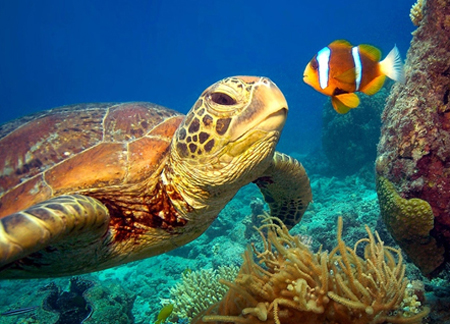An animal is a creature that is distinguished from plants by having independent movements and responsive sense organs.
2. Any member of the kingdom Animalia, comprising of multicellular organisms that have a well-defined shape and usually limited growth, can move voluntarily, actively acquire food and digest it internally, and have sensory and nervous systems that allow them to respond rapidly to stimuli: Some animals are restricted to being quadrupeds and applied especially to such as those that are used by man, as a horse, a donkey, or a dog.3. Etymology: from Latin animale, "living being, a being which breathes."
An older definition from the 1755 Dictionary of the English Language
Animals are such beings, which, besides the power of growing, and producing their kind, as plants and vegetables have, are endowed also with sensation and spontaneous motion.

Wildlife habitats are classified as either aquatic (water), terrestrial (land), or amphibious (water and land).
Latin: Faunus (god)
The god of nature. Symbols: goats and satyrs.
Latin: Diana (goddess); earlier, goddess of the moon: Luna
The goddess of the moon and hunting, patroness of maidens. Symbols: the crescent, stag, and arrows.
A Visual Encyclopedia; Project editors, Carrie Love, Caroline Stamps; Dorling Kindersley Limited; New York; 2012. Printed and bound in China by South China Printing Co. Ltd.
Information about tongue functions with animals
They're skinny, thick, colored, sometimes sticky, occasionally nubbed flabs of flesh that dangle in the mouths of virtually every mammal, bird, reptile, fish and amphibian on earth.
Tongues, as we know these universal appendages, can zap prey, slurp water, groom a friendly shoulder, shovel food, taste, twist, and enable their owners to make precise sounds.
The tongue presents a great anatomical puzzle. It is essentially solid muscle, but muscle by itself is usually useless.
A muscle, that can perform work only by contracting, becomes useful when attached to something rigid like bone.
When the muscle shortens, it pulls bones this way or that, providing the owner all sorts of mobility. For example, chameleons have a bone at the base of their tongues. Squeezing muscles against it makes the long tongue squirt out with extra force.
A tongue's muscles mingle at all sorts of angles, butting into each other head-on, stringing through a central core, curling around the outside like vines.
For a given motion, one muscle group tenses and another one pulls the tensed group as if it were one. In a split second, groups trade roles so the tongue can flick the opposite way.
2. A collection of wild animals kept in close, or open confinement, usually for public viewing: The “Wildpark" in Ted's city is a place where zoological animals like wolves, bisons, lynx, and otters can be seen, not in cages, but in natural habitats.

Two animals are swimming in an ocean environment.
